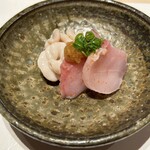
鮨 こいせ
Sushi koise
3.65
Susukino
「Sushi」
15,000-19,999円
--
Opening hours: [Monday-Saturday] 17:30-20:00-
Rest time: Sundays, holidays and irregular holidays
北海道札幌市中央区南5条西3-1-4 第11グリーンビル 4F
Photos
(20)

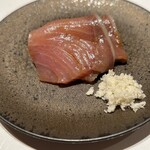
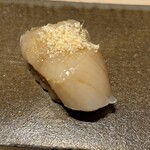
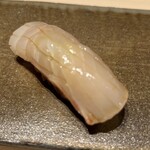
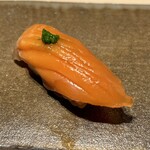
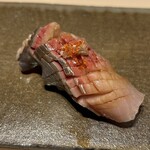
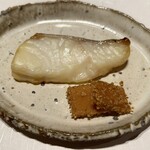
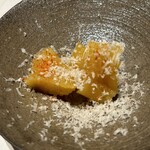
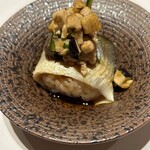
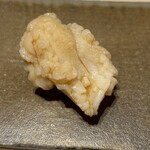

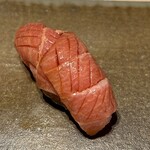
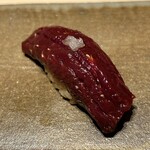
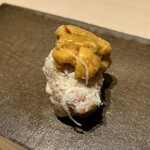
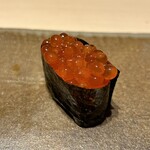
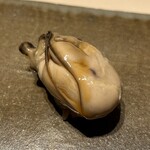
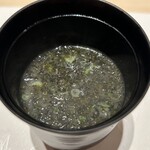


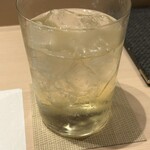
Details
Reservation Info
Reservations accepted. 50% of the day before and 100% on the day of cancellation.
Children
Children are allowed
Children are allowed for private parties only (17:30 session only).
Payment Method
Credit cards accepted
(VISA, Master, JCB, AMEX, Diners)
Electronic money is not accepted
QR code payment is not accepted.
Number of Seats
8 seats
(8 seats at counter)
Private Dining Rooms
None
Smoking and Non-Smoking
No smoking at the table
Parking
None
Facilities
Stylish space, relaxed atmosphere, large seating area, counter seating available
Drink
Sake available, shochu available, wine available
Dishes
Focus on fish dishes
Comments
(21)
7070JAZZ
4.50
Tonight, I visited the sushi restaurant "Sushi Koise" in Sapporo. For this Hokkaido food tour, I wanted to visit a new restaurant related to a sushi restaurant that I have felt a connection with in the past. Hokkaido is known for its fresh seafood-based sushi, but recently, there has been an increase in Edo-style sushi restaurants incorporating aging techniques. Among them, I love "Ise Sushi" in Otaru. The sushi is delicious, and the hospitality, including the proprietress, is outstanding. Whenever I visit Hokkaido, I always stop by Ise Sushi. This time, I visited "Sushi Koise," opened in January 2022 by Kenji Koise, the third generation carrying on Ise Sushi. I'm looking forward to the sushi made with red vinegar and fresh Hokkaido ingredients, utilizing aging techniques to create even higher quality Edo-style sushi. First, I started with a Sapporo draft beer. 1. Octopus liver salad - Lightly seasoned octopus liver with green onions. The appetizer was enticing. 2. Yellowtail from Rausu - I usually don't prefer yellowtail, but the fresh yellowtail from Rausu, aged for a week and served with grated Japanese horseradish, was a different experience. The aging process enhanced the flavor and aroma, making it delightful. 3. Matsukawa flounder - The first sushi was Matsukawa flounder. Flounder caught mainly in Hokkaido and Tohoku is a delight in Sapporo. The exceptional umami and juiciness of the flounder stood out. 4. Salmon roe - Among salmon varieties, the King Salmon "Masunosuke" is the highest grade. Its glossy salmon-pink color with white streaks of fat makes it the finest sushi fish. It truly embodies Hokkaido. 5. Pacific saury - Pacific saury in Hokkaido is different from what you would have in Kyoto. The beautifully shining silver fish is accentuated by the way it is sliced. Diced onions in the center complement the fish perfectly. It transforms into a high-grade fish despite being inexpensive. 6. Rockfish - Menke, a type of rockfish with a red body, dried to concentrate the umami, resulting in a delicate and refined taste without any strong flavors. 7. Sea urchin liver - Sea urchin liver mixed with Nara pickles and kasube. The texture of Nara pickles and kasube elevates the sea urchin liver. 8. Boiled octopus - Boiled octopus in a broth of abalone body fluids, kombu dashi, and sake. All-natural ingredients but it turned out quite sweet and delicious. Combining the remaining octopus liver with the boiled octopus was also delicious. 9. Red snapper - Served with sudachi for a refreshing taste. They don't make their own ponzu sauce because a professional makes it better. 10. Scallop - A small scallop folded in half, topped with powdered scallop liver from Iida. The flavor is further intensified. 11. Bluefin tuna lean (Oma) 12. Bluefin tuna fatty tuna (Oma) - Bluefin tuna from Oma is a must. A chunk of tuna that seems to have been thoroughly aged, but when eaten, the sweetness and acidity of the vinegar rice remain. 13. Hair crab, sea urchin - A generous mound of hair crab sushi, harmonizing with rich sea urchin. 14. Salmon roe - Autumn is the best season for salmon roe, so a generous serving on vinegar rice. 15. Oyster (Senpohji) - A mound of Senpohji oyster, a specialty of an Osaka sushi restaurant. It's fun to compare different sushi restaurants. 16. Mackerel sushi rolled in seaweed - Hokkaido mackerel sushi rolled in seaweed, handed over by the chef. 17. Red miso soup 18. Tamago (sweet egg omelet) After the draft beer, I enjoyed a Hibiki highball. This has become a regular sequence lately.
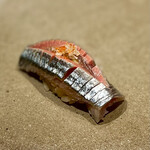

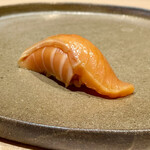
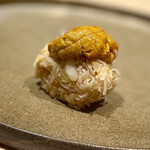
仮面三世
4.50
It's 8:00 PM on September 9, 2023 in Susukino. Oh, hello, it's Kamen! I couldn't come at all in August, so it's been a little over a month since my last visit. Today, half of the customers were from Korea, and we had a fun gathering while learning about Korean dining customs. I heard the reactions and points of excitement from foreign guests, and learned a lot. Food really does bring peace to the world. The meal was delicious again today, thank you very much! Itadakimasu!




なまらわやだ
4.50
Yes, it was a luxurious time after a long time. I didn't have time to eat lunch, but luckily I was able to make a reservation for 5:30 pm. I'll start with a quick soak in the hot spring and sauna. Oh, there's my companion. We've dined together before. The chef was pleased that the preparation was easier. Now, let's list the dishes that I thought were particularly delicious. First, the gurnard and shirako. The gurnard had a great texture. The summer shirako was light and delicious. It was cooked in a kue broth, which enhanced the flavor. Next, the herring, which I love. Served with shallots and chili pepper. It's always delicious, and this time the herring was exceptionally tasty. Grilled silver flounder with sea bream "sakamushi" was a treat. The most impressive dish was the steamed ayu sushi. It was genius. Steamed ayu sushi topped with Yamagata dashi. It's mixed with something like uruka. Mixing it and eating it makes it a perfect accompaniment for drinking sake. The quality of the sushi was also top-notch. Everything was delicious, and the affordable sake was much appreciated. It was a very satisfying evening! Thank you for the wonderful meal! (-人-)
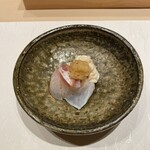
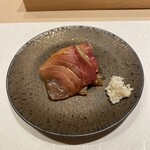
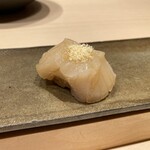
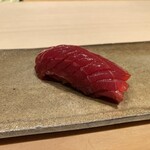
ノーザン好位置
3.70
The young chef at this restaurant comes from a famous sushi lineage in Otaru and trained at a legendary restaurant in Sapporo. The menu includes dishes like flatfish sushi with sea urchin and bonito, spring chrysanthemum with garlic, squid, scallop, trout, silver-stripe herring, and more. While the restaurant doesn't focus on high-end ingredients, they creatively use various Hokkaido ingredients. I was hoping for more unique dishes like those found at Sushi No Kura in Sapporo, but perhaps it was just not the right season. This restaurant is highly recommended for those who are new to sushi or unfamiliar with sitting at the counter. The course menu is reasonably priced and the drinks are especially affordable. In a city where sushi prices keep rising, this place is a rare find.

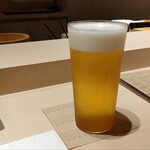
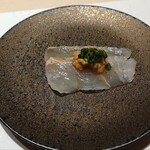
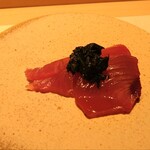
仮面三世
4.50
It's 8:00 PM on July 29, 2023. I'm in Susukino. Oh, hello, it's Kamen! Today, there will be a fireworks display of 6,000 shots at Esucon starting at 19:45 after the game. However, Koise-san's reservation is at 8:00. Hmm (*´-`) Koise-san won't be able to see the fireworks! Well, since I've come all this way, I won't be able to encounter a new surprising dish, but it's still a good restaurant. The staff has increased, making it even better. I feel like having some Japanese sake, but I'll go with a highball! There was a bit of inconsistency in the sushi rice, but I'm satisfied today too! Thank you for the meal!
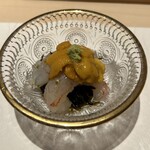
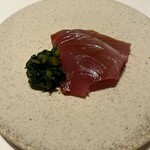
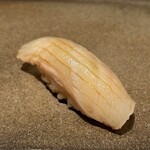
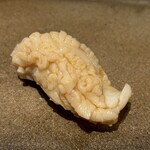
boze-てつ
4.00
I came to Sapporo in search of cool weather, but it's so hot! I will now review some of the restaurants in Sapporo during my stay here. The first meal I had in Sapporo was a sandwich from "Saera" in Odori, but since it was a takeout, I won't provide a review. So, let me share my experience at Koise, a sushi restaurant that I had been wanting to visit after reading about it on a food blog.
I must mention that this review may not be very helpful to others as it is more like a diary entry. Typically, when I visit a sushi restaurant, I prefer to go to places I have been to before and had a good experience. However, this time, I was trying out a new restaurant, so I was a bit nervous. I took the elevator to the 4th floor of a building and found the restaurant right away. It was a cozy place with a counter seating for 8 people. As I mentioned my name, I was guided to my seat.
In front of me, there was the owner behind the counter, and next to him, a skilled female sushi chef. The owner mentioned that he has been relying more on the female chef for preparation work lately, making his job easier. Though it was my first time seeing the female chef, she was efficient in taking orders and serving drinks. I won't go into details about the specific sushi and dishes, as you can refer to other reviews for that. The tuna and mackerel were particularly memorable, and I was a bit disappointed that there were no scallops.
I have only posted photos of the drinks, as my policy is to eat the sushi as soon as it is served, without taking photos. Everything that was served was delicious, and the conversations with the owner were interesting and informative. I learned that the owner had also worked at Arima before, where I had met him previously. Oh, and I must mention that the prices of the drinks were quite reasonable compared to other places, so you can enjoy without worrying about overspending. I have found another great restaurant, and I will definitely visit again the next time I come to Sapporo. Ah, I am satisfied. Thank you for the meal.
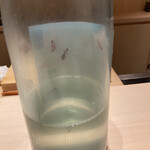
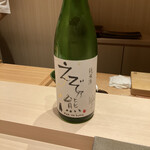
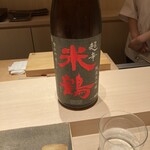
captainmook
3.70
I visited the restaurant in Sapporo recommended by an acquaintance for relatively casual yet delicious sushi. I made a reservation a month in advance, which was easy to secure. The chef's principle is to ensure guests can enjoy themselves without spending over 20,000 yen even when drinking alcohol. The sushi pieces are generously sized and satisfying. With about 6 appetizers and 12 pieces of sushi, you will leave quite full. Additional orders are also welcomed. The vinegared rice is on the firm side, with a distinctive strong red vinegar flavor. I heard that the chef trained at a renowned place, and the balance between the toppings and rice was excellent, which I personally really liked. The toppings include items like salmon, surf clam, alfonsino, Hokkaido shrimp, and crab, showcasing the flavors of Hokkaido for travelers to enjoy. The unique appetizer of "mentaiko spaghetti" was also interesting. On this visit, I refrained from alcohol as I had a health check-up the next day, enjoying three cups of cold green tea, while my companion had about 4 cups of sake, totaling 37,400 yen for two people. I was grateful for the recommendation of this wonderful restaurant. They also announce last-minute availability on Instagram, making it relatively easy to book a reservation. I look forward to visiting again. Thank you for the delicious meal.
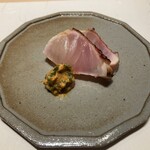
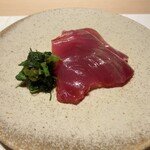
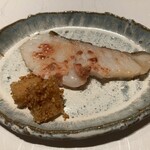

仮面三世
4.50
It's 8:00 PM in Susukino. Oh, hello, it's Kamen! I'm here again this week. It's been a week since my last visit. The lineup has changed slightly. I'm getting used to the change-ups. But with new material, unexpected jokes await. I can't take my eyes off the stage. Today, the warm sushi with crab and sea urchin was excellent! Thank you for the meal!

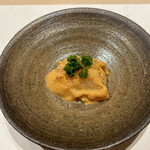
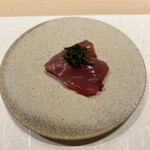

仮面三世
4.50
It's 8:00 PM on July 1st, and I'm back in Susukino. Hello, it's Kamen! Today, I visited Esconfield for a degustation meal and ended up overeating and drinking a bit. Even though it's already 8:00 PM, I didn't feel too hungry, but I still visited Koise-san. I started with a highball with Taketsuru whiskey and asked for all dishes to be served in smaller portions. Therefore, the photos of today's dishes show half the usual amount, so please keep that in mind. I'm getting used to Koise-san's innovative flavors and feeling more reassured by the consistent quality. Today, the frozen Tokishirazu and hairy crab were delicious! In the second half, to distract from the fullness, I enjoyed Koise's special drink of sweet sake mixed with carbonated water. I managed to eat everything deliciously! Thank you for the meal!
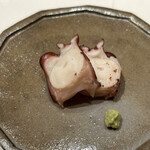
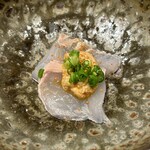
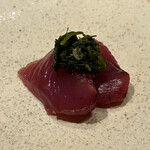
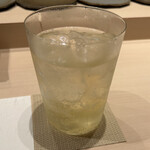
なまらわやだ
4.30
It had been about a year since I last visited here, and this stay was specifically to come here. The owner seemed as lively as ever, and I look forward to seeing further evolution. I started with a beer, as usual. On this day, the staff was going to be late, so the owner was handling everything alone. Even when busy, he was very attentive, always asking if I needed another drink when my glass was empty. The sushi was still outstanding, with the rice being even firmer and the balance with the toppings even better. Particularly delicious were the herring with eschalot, Hokkaido shrimp, and steamed sea bream sushi. The standout was the steamed sea bream sushi, with a crispy texture from the scales and a great aroma. The prices for drinks are still very reasonable, making it a must-visit for sushi and sake lovers. I can't wait to go back in August. Thank you for the wonderful meal!
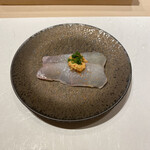
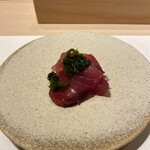


masas883608
5.00
When I come to Sapporo, I always want to eat sushi here! I have been a regular customer since the owner opened this shop after leaving the previous one. Despite the challenges of COVID-19 and rising ingredient costs, they manage to serve delicious sushi in a creative and affordable way. Looking forward to my next visit!
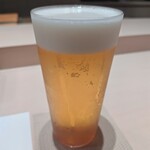
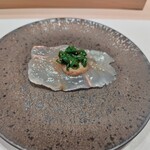
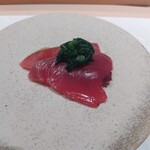
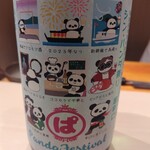
仮面三世
4.50
It's 8:00 PM on June 10, 2023. I'm at Usukino. Oh, hello, it's Kamen! I'm visiting Koise-san again this month! I started with a draft beer, but the dishes make me crave sake from the first bite. I quickly switched to sake! So happy~ And it's cheap! I'm getting used to it, but I always look forward to the creative small dishes! Don't forget to make a reservation for next month! Thank you for the delicious meal!
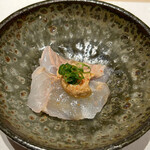

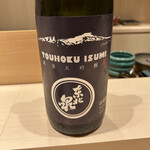
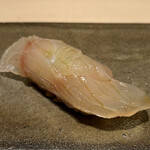
yoshi294471
4.10
I was surprised by the high quality in this location. The chef's originality and attention to detail were impressive, with hidden techniques that amazed me. I was moved by the combination of flavors and enjoyed hearing the stories behind the dishes. I was a bit lonely visiting alone, but that day there were two other solo customers as well. The atmosphere of sushi enthusiasts enjoying their meal together was unique. The chef was also knowledgeable about sake, selecting the perfect one for each person's taste. The sushi rice, made with Yagyuemon rice from Kyoto and red vinegar, was surprisingly firm. The firmness of the rice was unlike anything I had experienced before, but I gradually got used to it as I prefer shaped sushi rice. The chef's innovative sushi impressed us, and we couldn't help but smile and express our delight at its deliciousness. We resisted ordering more dishes like ramen or parfait to save room for the next day, so I look forward to enjoying them fully next time. I can't wait for the next visit. The chef recommended a special restaurant, and I immediately made plans to go. It was a delightful experience. Thank you for the wonderful meal. Delicious items included ginger pickles, kawahagi liver soy sauce, bonito monkfish liver, garlic, flounder, herring, tuna, scallop, bottarga, Parmesan cheese, shichimi pepper, steamed kinmedai, surf clam, hairy crab, oysters, sea urchin, and miso soup.
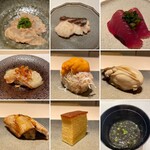
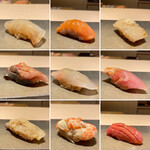

世界のアナコンダ
4.40
When it comes to Hokkaido, you have to eat sushi, so this time my senpai made a reservation for us at Sushi Koise. The head chef used to work at Tentei Jin and the restaurant is located in Green Building in Susukino. The only option is a set course menu priced at around 16,500 yen. The menu for this visit included:
- Appetizers: Red sea bream, bonito
- Sushi: Flounder, scallop, herring
- Appetizers: Sole, shirako, cod roe with pepperoncino, foie gras
- Sushi: Alfonsino, golden eye snapper, scallop toro, sea urchin, okhotsk atka mackerel, conger eel
- Miso soup with hokke fish, egg
Everything was incredibly fresh and expertly prepared, with even the knife work and aging process adding to the flavors. Even though I'm not a fan of bonito, it was surprisingly delicious. The scallop, toro, and other sushi were top-notch, making the 16,500 yen price tag a pleasant surprise. I definitely want to go back again. Thank you for the wonderful meal.


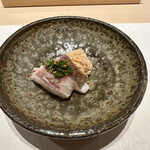
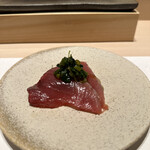
かっちっちのち
3.50
The friendly owner and the sushi were delicious. I started with a sip of beer. It was my first time trying the salmon sushi, which was vibrant in color and delicious in taste. The tuna was aged for 17 days, creating a perfect balance of acidity and umami. I would love to visit again. Thank you for the meal!
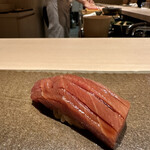

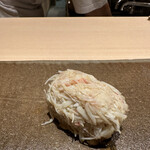
寿司の熊さん
4.00
I had the course meal. It was enjoyable to have the dishes explained to me. I think the cost performance is good. The master was friendly and served a variety of Japanese sake to match the dishes. The surf clam was delicious.
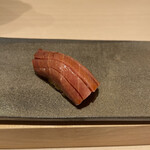
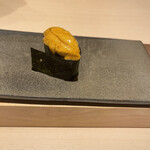
仮面三世
4.50
It's 8:00 PM on May 13th in Susukino. Oh, hello, it's Kamen! I visited Koise-san again this month. Today's lineup was unpredictable as always, with a flexible approach. I had a great time tonight. This is my favorite sushi restaurant in Susukino right now. Thank you for the delicious meal!
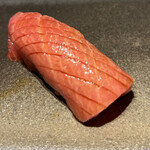

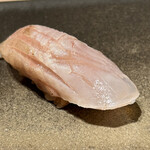
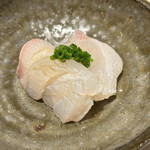
仮面三世
4.50
It's 8:00 PM on April 15, 2023. I'm at Usukono. Oh, hello, it's Kamen! Tonight, I visited Koise-san, who is currently the most popular in Sapporo! It's a bit reminiscent of the old Sushikan! In any case, the sensibility is new. It will probably be harder to get a reservation in the future! I really enjoyed it this time too! Thank you for the meal!
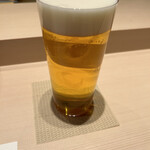
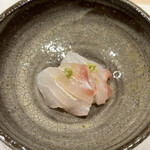
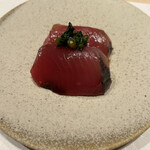

仮面三世
4.50
It's 8:00 pm on April 1st. I went to Usona. It's April Fools' Day. Oh, hello, it's Kamen! Today, I watched the Nippon-Ham Fighters game at Escon Field. The first victory of the season came after extra innings, with a walk-off RBI by Kiyomiya. The shuttle bus back home still has room for improvement in its operation, but it's progressing day by day. I returned to the hotel feeling good after changing and putting away my luggage, only to realize it was already departure time. I entered the restaurant on time. To cut to the chase, I visited various sushi restaurants in Sapporo this time, but this one was the most interesting. It's not just a little different, but something completely different, with a fresh feeling to it! I made sure to make a reservation for next time and returned to the hotel happily! Thank you for the meal!
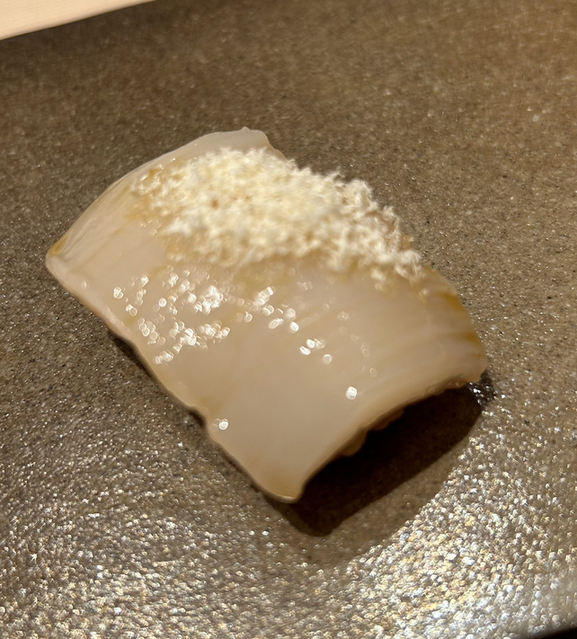
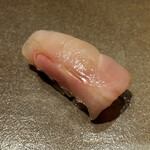
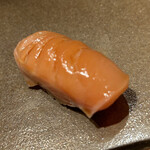

めりょん
4.60
First visit, first trip to Sapporo, found this place online... It's a newly opened shop and very clean. We went with the course menu and got a variety of dishes, including sushi, and left with a full stomach. The aged fish in particular was delicious. The chef was also very friendly, and I'm glad we chose this place. We had quite a bit of alcohol, and the total came to around 20,000 yen. Considering the quality and quantity, I think it's quite affordable. I hope it doesn't become too difficult to make reservations in the future... I would like to visit again.
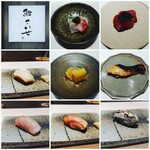
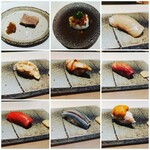
中目のやっこさん
4.30
Standing in Susukino, "Sushi Koise" exudes a new breeze. I visited this fresh sushi restaurant and would like to introduce it to you. I was looking for a sushi restaurant that could be used for entertaining during my business trip to Sapporo, and I was drawn to it by the reviews of my followers, so I made a reservation. The location is a 3-minute walk from Susukino Station in a multi-tenant building. I took the elevator to the 4th floor with my body chilled from the heavy snow. A white noren curtain hangs elegantly in front of a stylish Japanese-style storefront. The interior is unified with a bright wooden theme, creating a clean and inviting atmosphere with only a white wooden counter. At this counter, the masterful chef, Kenji Koise, stands behind the counter. Born in Otaru's Ise Sushi, he trained at Sushi Zen and Sushi Arima, and then became the head chef at Sushi Tenchijin, all at the young age of 35. His firm expression and dignified demeanor evoke a sense of excitement in diners. The menu consists only of omakase courses. Here is what I had: "Omakase Course 16,500 yen" - Shabu-shabu of red sea bream (Chiba) - Kenken bonito from Mie - Scallop (Nemuro) - Masunosuke (Hokkaido) - Oysters (Kushiro Senpoushi) - Beltfish (Chiba) - Norisore egg yolk soy sauce marinade - Ankimo (Shakotan) - Steamed sushi of white sweetfish (Mie) - Menuki - Hokkyokai - Medium fatty tuna (Yamaguchi) - Otoro (Toi) - Shime saba (Suttsu) - Hair crab and sea urchin - Shirako - Miso soup - Anago - Tamago - Otoro * Additional - Draft beer - Tokachi Junmai / Kamikawa Taisetsu Sake Brewery (Hokkaido Obihiro) - Bizen Ichiken Nonosan Junmai Namazake / Sanyo Haisake Brewery (Hyogo Shiso City) - Ezo no Kuma Junmai Sake Fire-heated / Takasago Sake Brewery (Hokkaido Asahikawa) * Each 2 go shared by 4 people. It is a given that Hokkaido offers excellent ingredients, but Koise takes it a step further by deliberately using a variety of non-local ingredients, creating an ideal form of Edomae sushi that sets it apart from other restaurants. The red vinegar used in the sushi rice, as it dissolves with each bite, enhances the best acidity for each topping. The Masunosuke, hair crab and sea urchin, and shirako are outstandingly delicious with a Hokkaido-like flavor. Oysters and Hokkyokai are direct in their mineral taste, while the tuna and medium fatty tuna are perfectly balanced with the red vinegar. The steamed sushi of white sweetfish has a crispy texture from the fried scales, complementing the richness of the flesh with the sushi rice. The winter-like tuna is well complemented by the sushi rice, and the medium fatty tuna, as well as the Otoro, are simply delicious. The Otoro is so good that I couldn't help but order more! I have included brief comments on each dish in the photos for your reference. The omakase course is well-prepared, leaving you eagerly anticipating the next piece of sushi and providing a satisfying dining experience that keeps you on your toes. Although the head chef may seem stern at first glance, his straightforward dedication is evident in his charming personality. He also accepts reservations via Instagram and his humorous posts add to his approachable nature. I look forward to watching this stylish restaurant, which adds a touch of elegance to the nights in Susukino, grow and prosper. Sushi Koise Address: 4th floor, 3-1-4 Minami 5 Jonishi, Chuo-ku, Sapporo, Hokkaido Phone: 011-522-7939 Business hours: 17:30-22:30 Closed on Sundays and public holidays Stay time: 2 hours Bill: 20,850 yen including tax per person Reservation: Made by phone about 1 month in advance.
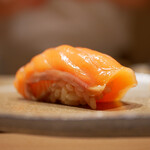
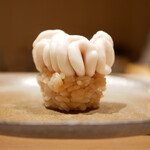
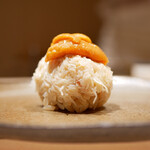
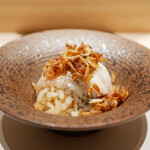
Email Login